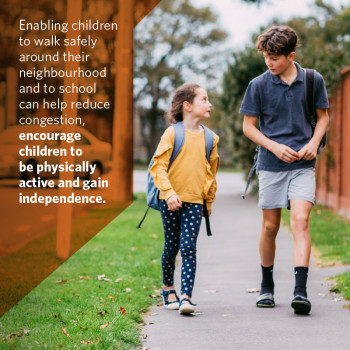 Walking can equitably allow people to access employment, community services, and natural environments, building a sense of community.
Walking can equitably allow people to access employment, community services, and natural environments, building a sense of community.
Experiences from New Zealand, and internationally, that support this are outlined below:
[1] Cheyne, Christine, Imran, M., Ahmed, W., Potroz, C. (2017). Barriers to Active Transport in Palmerston North: Experiences and Perspectives of Secondary School Students(external link)
[2] Jacobs, J. (1961). The Death and Life of Great American Cities
[3] Mason, C. (2000). Transport and health: en route to a healthier Australia? The Medical Journal of Australia 172, 230-232.
[4] Leyden, K.M. (2003). Social Capital and the Built Environment: The Importance of Walkable Neighborhoods. American Journal of Public Health, 93(9),1546–1551
[5] Koorey, G. and Chesterman, R. (2010). Assessing the Environmental Capacity of Local Residential Streets. World Conference on Transport Research, Lisbon.
[6] French, S., Wood, L., Alexandra, S., Foster, B.G., Lawrence, F. and Learnihan, V. (2013), Sense of Community and Its Association With the Neighbourhood Built Environment, Environment and Behavior, 46 (6), 677-69.
[7] Haarhoff, et al. (2019). Living at Density in Hobsonville Point, Auckland: Resident Perceptions. National Science Challenge 11: Building Better Homes Towns and Cities(external link)